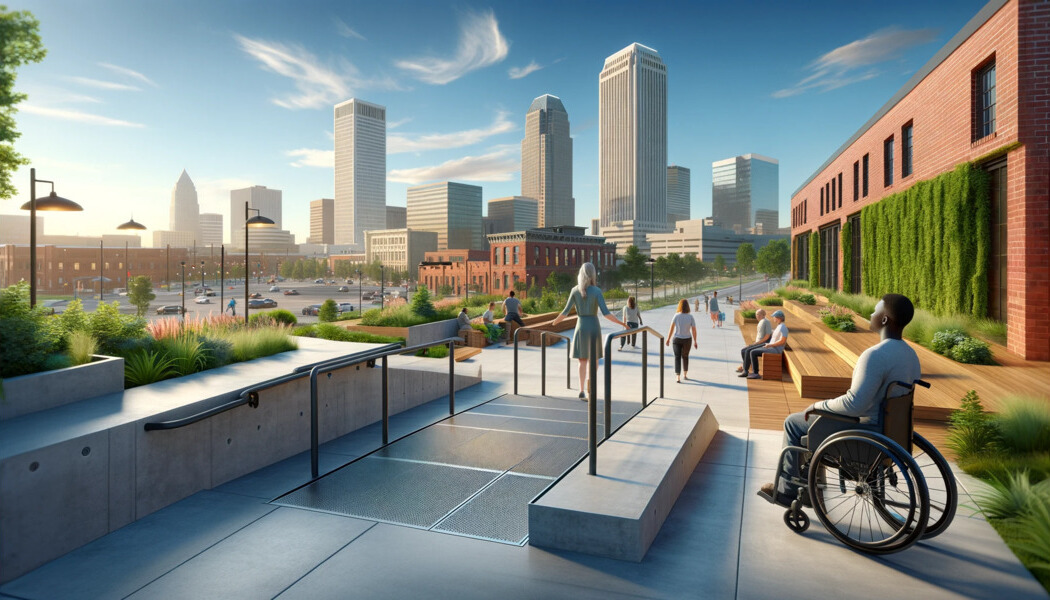
Creating accessible environments is essential for ensuring that everyone can navigate spaces safely and comfortably. ADA-compliant concrete ramps play a vital role in achieving this accessibility, particularly for individuals with mobility challenges. Constructing these ramps involves adhering to specific guidelines set forth by the Americans with Disabilities Act (ADA). These guidelines cover key aspects such as slope, width, and handrail standards to ensure safe and easy use.
Concrete is an excellent material choice for ADA ramps due to its durability, slip resistance, and adaptability to various design needs. A well-constructed concrete ramp not only meets regulatory standards but also withstands the test of time and varying weather conditions. Moreover, incorporating thoughtful design elements like textured surfaces and gentle slopes can significantly enhance the ramp’s usability. By focusing on these important factors, you can ensure that your concrete ramps remain safe, attractive, and compliant with ADA standards.
Understanding ADA Compliance for Ramps
Ensuring that ramps meet Americans with Disabilities Act (ADA) standards is essential for providing safe and accessible pathways. Key ADA requirements include the ramp’s slope, width, and handrail standards. For slope, the maximum ratio is 1:12, meaning for every inch of height, there must be at least 12 inches of ramp length to ensure ease of use. This gradual incline prevents the ramp from being too steep for wheelchair users or those with limited mobility.
The minimum width for ADA-compliant ramps is 36 inches, which allows sufficient space for wheelchair passage. Handrails are necessary for ramps with a rise of more than 6 inches and must be placed 34-38 inches above the ramp’s surface. These handrails should extend at least 12 inches beyond the top and bottom of the ramp to provide additional support. Following these guidelines helps create accessible environments for everyone while enhancing the safety and usability of public and private spaces.
Benefits of Using Concrete for ADA Ramps
Concrete is an excellent material choice for ADA ramps for several reasons. Its durability ensures that the ramp will withstand heavy use and harsh weather conditions over time, providing a long-lasting solution. Unlike other materials that may wear down quickly, concrete maintains its integrity and requires less frequent replacement, making it a cost-effective option for property owners.
Concrete’s slip resistance is another crucial benefit. By adding a textured finish to the concrete surface, it becomes less slippery, reducing the risk of falls and injuries. The versatility of concrete also allows for various design options, enabling us to create ramps that not only meet functional requirements but also complement the property’s aesthetic. Whether it’s a smooth finish or a more decorative pattern, concrete can be tailored to blend seamlessly with the surrounding environment, making it a versatile and practical choice for ADA-compliant ramps.
Design Features to Enhance Accessibility
Designing ADA-compliant ramps involves more than just meeting basic requirements; it’s about enhancing accessibility for everyone. One important feature to consider is textured surfaces. Textured concrete can improve traction, making ramps safer and more user-friendly, especially in wet conditions. Techniques such as broom finishes or exposed aggregates provide a non-slip surface that helps prevent accidents.
Gentle slopes are another crucial design element. While ADA guidelines specify a maximum slope for ramps, incorporating a gentle incline where possible makes the ramp easier to navigate. Additionally, seamless transitions between the ramp and surrounding areas eliminate tripping hazards and make it smoother for wheelchair users to move up and down. These thoughtful design features contribute to creating a ramp that is not only functional but also comfortable for all users.
Maintenance Tips for Long-Lasting ADA Ramps
Maintaining concrete ADA ramps ensures they remain safe and functional for years. Regular inspections are essential to check for cracks, surface wear, or any obstacles that might impair accessibility. Early detection of issues allows for prompt action, preventing small problems from becoming significant hazards.
Cleaning is another critical aspect of maintenance. Routine sweeping and washing can keep the surface free of debris, which could cause slips or affect wheelchair movement. Additionally, sealing the concrete can protect it from weather damage and stains, extending its lifespan. Applying a sealer every few years safeguards the ramp against moisture and temperature changes, preserving both its appearance and functionality. By following these maintenance practices, you can ensure that your ADA ramps continue to serve their purpose effectively and durably.
Conclusion
Concrete stairs and ADA ramps are excellent additions to any home, delivering both practicality and aesthetic appeal. From the durability and design flexibility of concrete stairs to the essential accessibility features of ADA-compliant ramps, these elements enhance the functionality and beauty of your property. By understanding the benefits, incorporating innovative design features, and committing to regular maintenance, you can maximize the longevity and effectiveness of your concrete installations.
